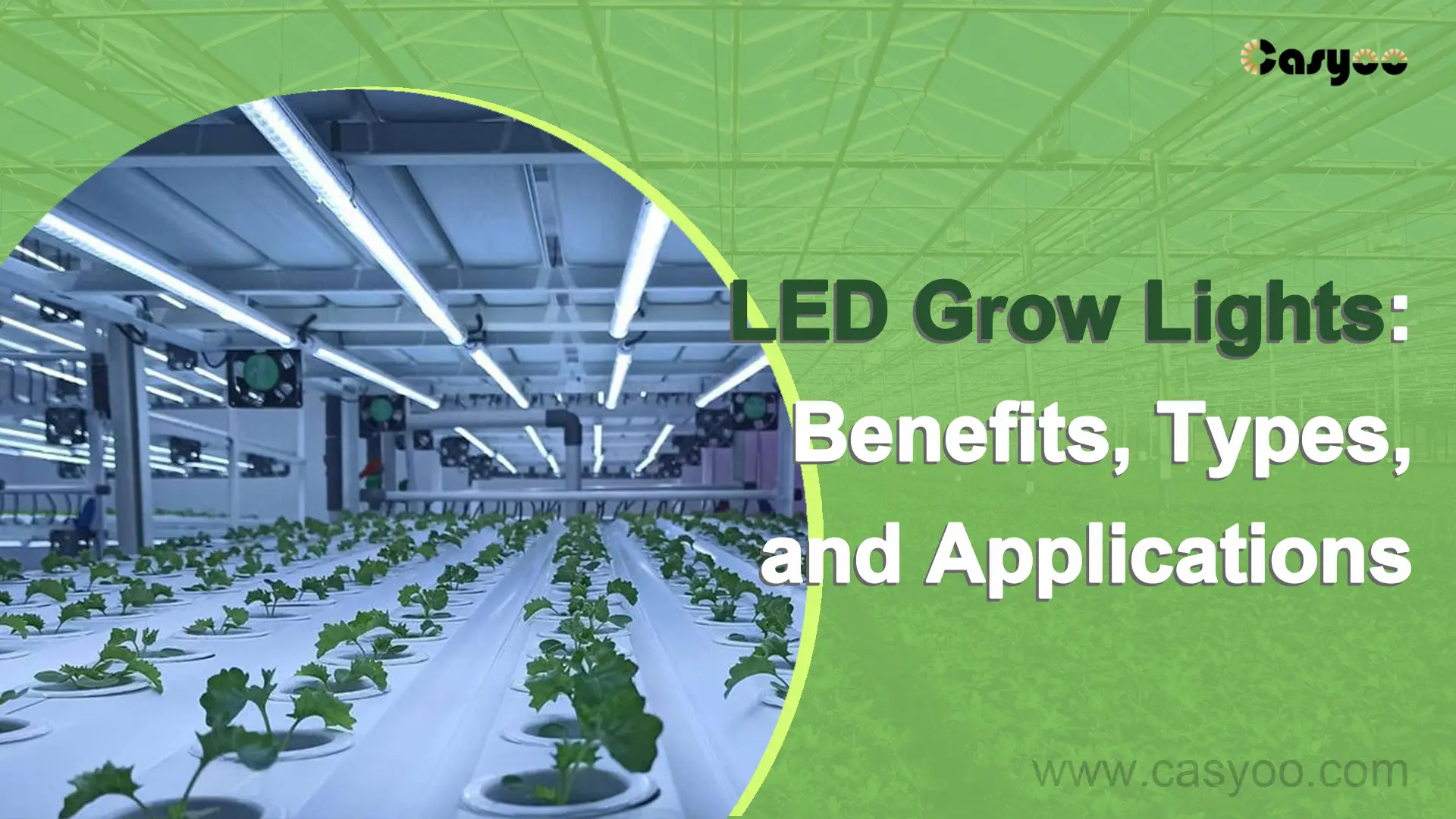LED grow lights are a vital tool for plant growth. They are designed to give the right light spectrum for plants to develop and flourish. This post will explore their advantages, and give a general rundown of the various kinds, usage, and more for them.
Why Use LED Grow Lights?
LED grow lights provide several benefits for both indoor and outdoor horticulture, including:
- Extended Growing Season: LED grow lights allow for year-round crop growing, regardless of the weather.
- Better Plant Health: LED grow lights offer the ideal light spectrum to your crops, which results in healthier and more robust plants.
- Controlled Environment: By using grow lights in indoor gardening, gardeners may establish a reliable and ideal growing environment for their plants, minimizing the effects of pests, illnesses, and erratic weather.
- Increased Plant Variety: Gardeners can grow a greater variety of plants under LED grow lights, including exotic species and kinds that might not otherwise be able to withstand the climate in their area.
What Are the Main Types of LED Grow Lights?
LED grow lighting is available in an array of sizes and shapes. Gaining knowledge about the most popular varieties will help you select the one that will fit your grow room the best.
Traditional
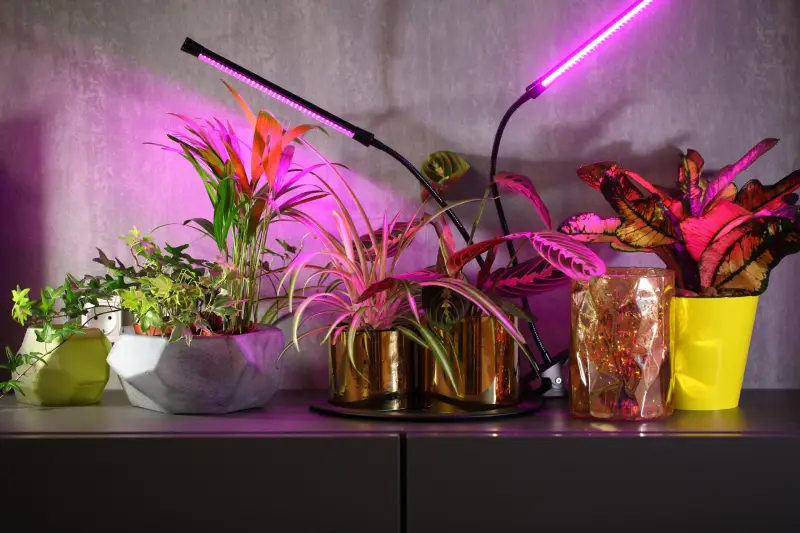
Traditional LED grow lights are a great choice for tiny spaces because they are usually compact. Their LEDs are usually multicolored and cover the entire color frequency spectrum of color, as opposed to white LEDs. Indoor growers may not like the colorful appearance of this kind of light.
Spread-style
Spread-style LED lights are made up of numerous tiny lights dispersed throughout their entire surface. They can thus be used to simultaneously light a large number of plants. The two primary kinds of spread lights are LED panels and multi-bar grow lights.
- LED Panels
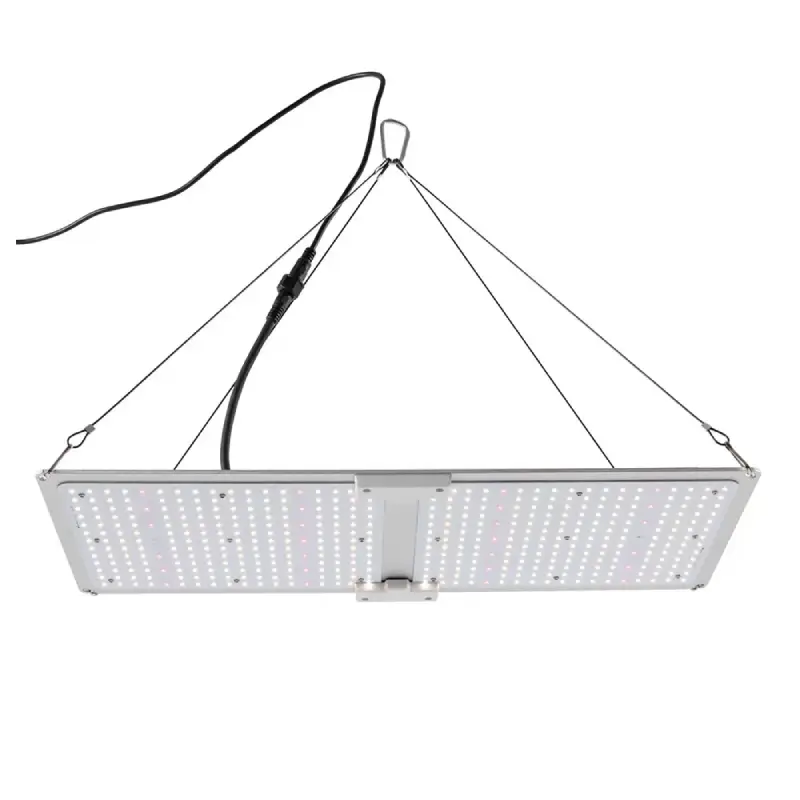
They are featured by a large number of LEDs spread out over a large board. They use full-spectrum white LED diodes and usually have passive cooling built in, so you can put plants right under them without worrying about overheating them.
- Multi-bar Grow Lights
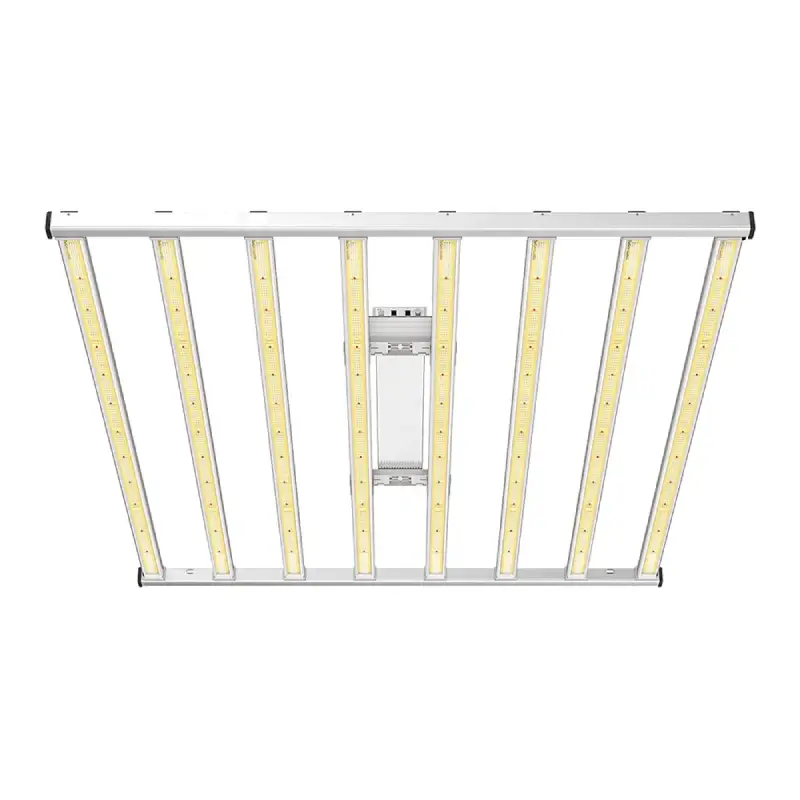
Multi-bar grow lights include several LEDs on the thin arms of an open bar shape in place of a solid board. Usually, these are more costly than LED panel lights.
Chip on Board (COB)
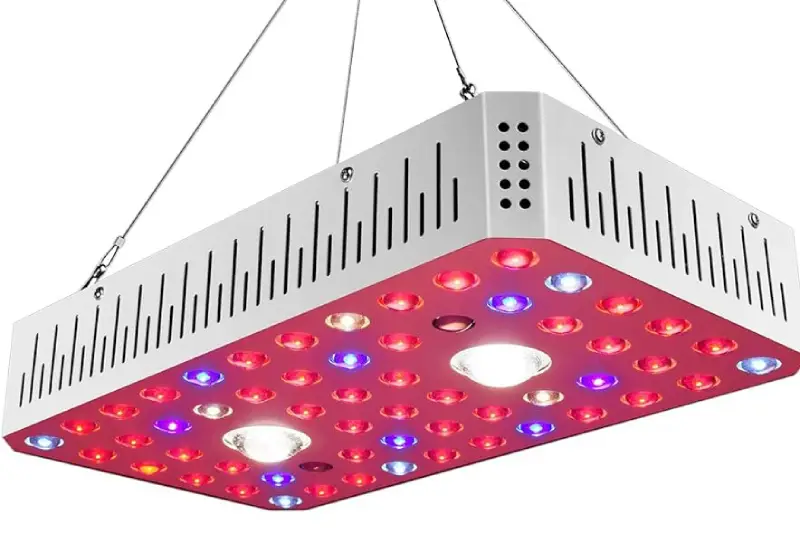
COB grow lights produce a single intense point of light by arranging several small LEDs tightly together on a single chip. Thus they offer the best lighting to the center of the area they cover, but they do not offer the same degree of extensive coverage as spread-style LEDs.
COB lights often generate more heat than other types of LEDs because of their high power output, which may require the usage of fans to keep the surrounding environment at an ideal temperature. Compared to the spread-style LEDs they offer deeper canopy penetration and employ full-spectrum white LED diodes.
What Are the Applications of LED Grow Lights?
LED grow lights can be used in various situations, including but not limited to:
- Indoor gardening: Since natural sunlight may be scarce or nonexistent indoors, grow lights are crucial for plant cultivation.
- Greenhouses: Supplemental grow lighting in greenhouses can prolong the growing season and enhance plant health, especially in the winter.
- Vertical farming: LED grow light can illuminate many layers of plants, increasing yields in a smaller area.
- Seed starting and cloning: Grow lights offer the warmth and light spectrum required for seeds to germinate and for clones to form strong roots.
- Speed breeding: Artificial lighting contributes immensely to speed breeding.
What to Look for When Selecting LED Grow Lights?
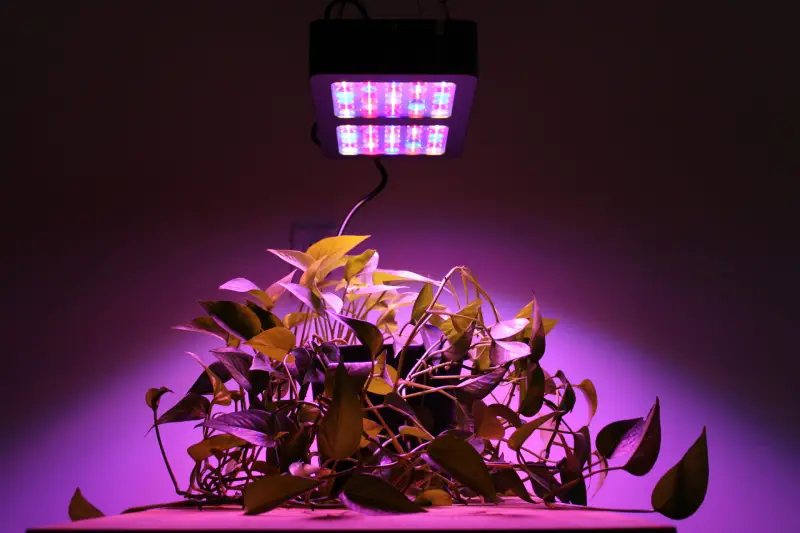
Choosing the most suitable LED grow light for your crops might be challenging with the wide variety available on the market. The following are the main factors to take into account when selecting LED grow lights:
Light Spectrum
Natural sunlight contains all of the electromagnetic spectrum’s colors. Full-spectrum LED lights generate all the colors needed for every phase of the plant growth process, but certain LED lights are limited to emitting only certain color frequencies.
Blue light stimulates early plant development. Although purple light is also utilized during the vegetative stage, it is not as efficient as blue light in photosynthesis. Red light promotes flowering and aids in the last phases of plant growth. White light, on the other hand, contains the entire color spectrum. It can be beneficial at any growth stage.
Light Intensity
This is significant because it shows how much light the LED grow light is able to absorb by the plants. Compare the amount of light your plant needs to the intensity of PPF or PPFD when shopping for a grow light.
Coverage
LED grow lights often state the veg/flowering coverage. Make sure the light you select covers the growing space.
Adjustability
Your LED grow light should have several customizable features. Spectrum is the first thing to think about. A lot of the LED grow lights available now have programmable settings that let them output light with different color wavelengths. This enables you to adjust the light spectrum at different phases of the life cycles of your plants. LED grow lights often feature a dimming function to allow you to reduce the light intensity.
Other Factors
The power cord’s length, the presence of a built-in timer, and the lights’ lifespan should all be taken into account when buying the best LED grow light.
Final Thoughts
As you become more familiar with LED grow lighting, you’ll discover new ways to maximize plant development and produce a flourishing indoor or outdoor garden. You may nurture a wide range of plants and enjoy a lush garden all year long with the right LED grow light.
You can trust Casyoo. We have our own factory with 12, 400㎡ and and a team of 70+ engineers. Feel free to contact us if you have further questions.

